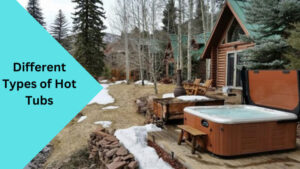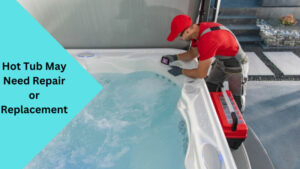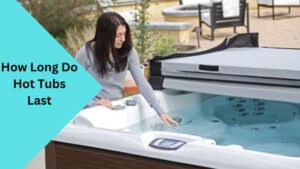Welcome to our comprehensive guide on the lifespan of hot tubs. If you are considering purchasing a hot tub for your home or have recently acquired one, you might be wondering, “How long do hot tubs last?” This question is essential to understand before investing your time and money into a hot tub. In this article, we will explore the factors that affect a hot tub’s lifespan and discuss the specific lifespans of various types of hot tubs, including inflatable hot tubs, Jacuzzi hot tubs, Coleman hot tubs, and cedar hot tubs.
Factors Affecting Hot Tub Lifespan
Several factors play a crucial role in determining how long a hot tub will last. Understanding these factors will help you make informed decisions in terms of maintenance, care, and eventual replacement of your hot tub. Here are some of the most important factors:
- Quality of Materials: The quality of the materials used in the construction of a hot tub greatly affects its lifespan. High-quality materials, such as durable acrylic shells, corrosion-resistant components, and sturdy frames, generally result in a longer-lasting hot tub.
- Maintenance and Care: Regular maintenance and proper care significantly contribute to the longevity of a hot tub. This includes routine cleaning, water testing, chemical balancing, and ensuring all components are working correctly. Neglecting maintenance can lead to premature wear and damage, shortening the overall lifespan of your hot tub.
- Climate and Weather Conditions: The climate and weather conditions in which your hot tub is located can impact its lifespan. Exposure to extreme temperatures, harsh sunlight, freezing temperatures, and high humidity levels can accelerate wear and tear. Providing adequate protection and maintaining suitable operating conditions for your hot tub can help extend its lifespan.
- Frequency of Use: The frequency at which you use your hot tub also plays a role. Like any other appliance or equipment, the more frequently it is used, the greater the wear and tear it will experience. However, with proper maintenance, even heavily used hot tubs can last a significant amount of time.
Did you know What To Look For When Buying A Hot Tub – The Ultimate Guide
The Lifespan of Different Types of Hot Tubs

Inflatable Hot Tubs
Inflatable hot tubs have gained popularity in recent years due to their affordability and portability. However, it’s important to understand that their lifespan may not match that of more permanent hot tub options. On average, an inflatable hot tub can last anywhere from three to five years, depending on various factors such as quality, usage, and maintenance. While they may not offer the longevity of other types of hot tubs, they can still provide a few years of relaxation and enjoyment with proper care.
Jacuzzi Hot Tubs
Jacuzzi is a well-known brand that has been manufacturing hot tubs for decades. When it comes to durability and longevity, Jacuzzi hot tubs are known for their quality construction and reliable components. With regular maintenance and proper care, a Jacuzzi hot tub can last anywhere from ten to fifteen years. This longer lifespan can be attributed to the superior materials and engineering that Jacuzzi incorporates into their hot tubs.
Coleman Hot Tubs
Coleman is another reputable brand that offers a wide range of hot tub options. The lifespan of Coleman hot tubs can vary depending on the model and usage. On average, a well-maintained Coleman hot tub can last between eight and twelve years. However, like any hot tub, regular upkeep and adherence to maintenance guidelines are crucial for maximizing its lifespan.
Cedar Hot Tubs
Cedar hot tubs provide a unique and naturalistic option for hot tub enthusiasts. Constructed from durable cedar wood, these hot tubs require special care and maintenance to ensure their longevity. With proper protection and regular maintenance, a cedar hot tub can last anywhere from twelve to twenty years. However, it is essential to follow specific maintenance protocols to prevent wood rot and deterioration.To explore more details and considerations regarding life span of Gunite Pools, our comprehensive guide on How Long Do Gunite Pools Really Last? Unveiling the Truth has you covered.
How to Extend the Lifespan of Your Hot Tub
While the lifespan of a hot tub is influenced by various factors, there are several steps you can take to extend its longevity:
- Follow Manufacturer Guidelines: Always refer to the manufacturer’s guidelines for maintenance and care. They provide valuable instructions on chemical levels, cleaning routines, and other essential maintenance practices specific to your hot tub model.
- Regular Cleaning and Water Maintenance: Clean your hot tub regularly and keep the water balanced and free from contaminants. This includes removing debris, checking and adjusting chemical levels, and ensuring proper filtration.
- Protect from Harsh Weather Conditions: Provide adequate protection for your hot tub from extreme weather conditions, such as sun, rain, snow, and freezing temperatures. Use covers or enclosures to shield your hot tub when not in use.
- Preventative Maintenance: Perform regular inspections to identify and address any issues promptly. This includes checking for leaks, monitoring water heater performance, and inspecting electrical components.
- Hire Professional Service: Consider hiring a professional hot tub service technician for periodic inspections and maintenance. They can help ensure that all components are in good working order and detect potential issues before they become major problems.
By following these practices, you can maximize the lifespan of your hot tub and continue to enjoy its benefits for many years.
Signs Your Hot Tub May Need Repair or Replacement

While proper care and maintenance can significantly extend the lifespan of your hot tub, there may come a time when repairs or replacement are necessary. Here are some common signs that indicate your hot tub may need attention:
- Persistent Leaks: If you notice ongoing leaks or significant water loss, it may be a sign of a more significant issue. Leaks can cause structural damage and lead to more expensive repairs or potential replacement.
- Inefficient Heating: If your hot tub takes longer than usual to heat up or struggles to maintain the desired temperature, there may be an issue with the heating element or controls. A professional technician can diagnose and repair this type of problem.
- Decreased Jet Performance: Reduced jet performance, weak water pressure, or uneven water flow can indicate a clog or malfunctioning components. Cleaning or repairing the jets may be necessary to restore optimal performance.
- Electrical Issues: If you notice any issues with the electrical system, such as flickering lights or tripped circuits, it’s essential to have them addressed immediately. Electrical problems pose a safety risk and may require professional expertise to resolve.
- Structural Degradation: Over time, hot tubs may show signs of structural degradation, such as cracks or fading. While minor cosmetic issues can often be repaired, significant structural damage may warrant considering a replacement.
If you encounter any of these signs or suspect something is off with your hot tub, it’s best to consult a professional technician who can assess the situation and provide guidance on the most appropriate course of action.
Conclusion
In conclusion, the lifespan of a hot tub can vary depending on factors such as material quality, maintenance, climate, usage, and type of hot tub. Inflatable hot tubs typically last around three to five years, while Jacuzzi hot tubs can provide ten to fifteen years of service. Coleman hot tubs have an average lifespan of eight to twelve years, and cedar hot tubs can endure for about twelve to twenty years with proper care.
To ensure your hot tub lasts as long as possible, follow proper maintenance practices, protect it from harsh weather conditions, and address any issues promptly. By doing so, you can enjoy the benefits of your hot tub for many years to come. Remember, it’s important to keep an eye out for signs that indicate repairs or replacement may be necessary, such as persistent leaks, inefficient heating, decreased jet performance, electrical issues, or structural degradation.

Greetings, fellow pool enthusiasts! I’m Turner Davis, your dedicated guide to the world of pool care and maintenance. With over a decade of experience in the field, I’ve made it my mission to transform ordinary pools into extraordinary aquatic retreats.

